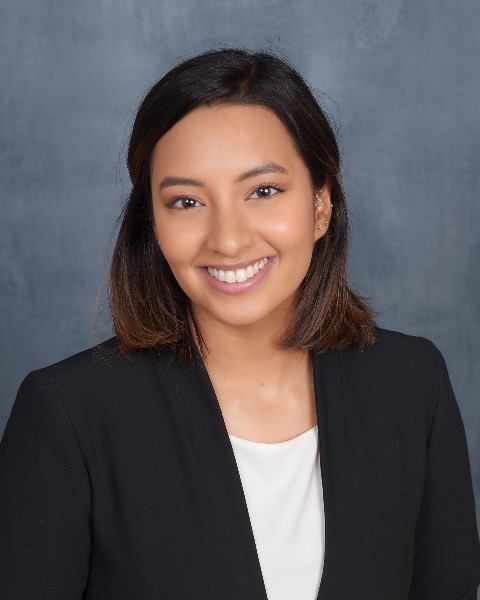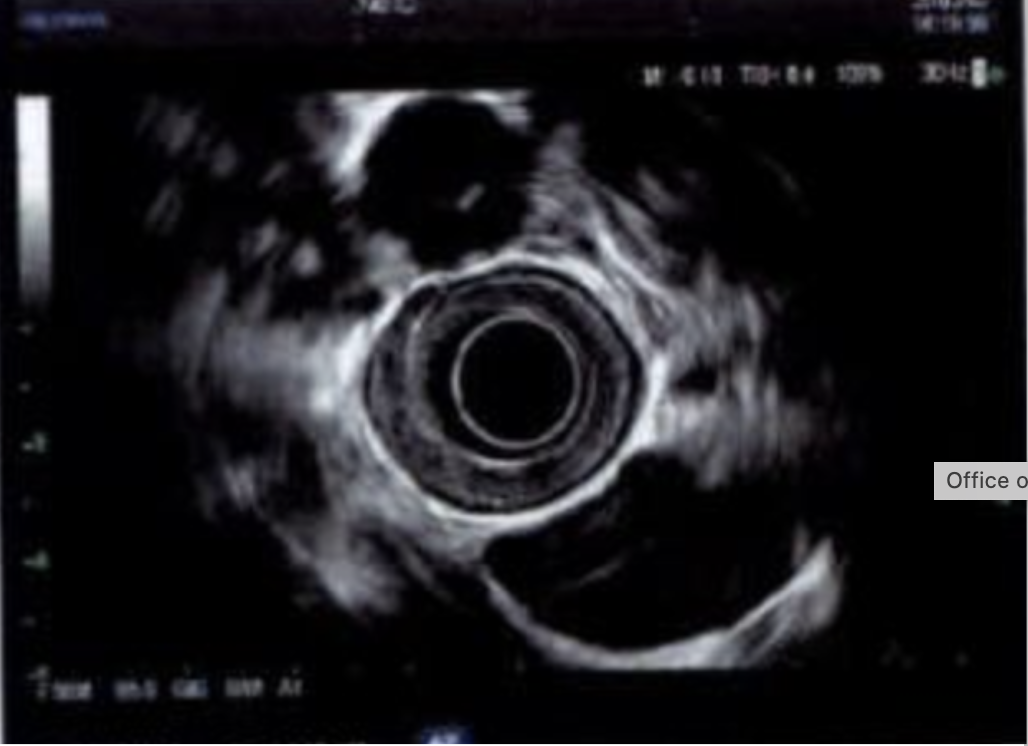Monday Poster Session
Category: Interventional Endoscopy
P3576 - Case Report: Fibrosis as a Complication of Peroral Endoscopic Myotomy With Successful Management With EsoFLIP Pneumatic Dilation
Monday, October 27, 2025
10:30 AM - 4:00 PM PDT
Location: Exhibit Hall

Aneri Vakharia, MD, MS (she/her/hers)
Northwell Health
Manhasset, NY
Presenting Author(s)
Aneri Vakharia, MD, MS, Jang Kim, MD, Mary Cheung, MD, Jen Henry, MD
Northwell Health, Manhasset, NY
Introduction: Peroral Endoscopic myotomy (POEM) is an advanced procedure utilized to treat esophageal motility disorders affecting the lower esophageal sphincter (LES). Although esophageal stricture is a known rare complication, fibrosis is not a known complication and has not been noted in literature.1 This case demonstrates that POEM can lead to fibrosis as a complication and EsoFLIP pneumatic dilatation can be used as a possible intervention.
Case Description/
Methods: A 42-year-old female presented with dysphagia to solids and liquids with daily reflux symptoms refractory to medical therapy. After a workup including a barium esophagram with tablet challenge and high-resolution esophageal manometry, the patient was confirmed to have evolving achalasia with confirmed esophagogastric junction outflow obstruction (EGJOO). She was treated with 100 units of botulinum toxin injection at the LES. Patient developed recurrent symptoms after 6 months, for which EndoFLIP showed findings consistent with EGJOO. Patient elected to proceed with POEM, which was notable for selective circular myotomy that started at 34cm and extended to 41 cm from the incisors. Despite initial symptom improvement, her symptoms recurred after 3 months. Repeat barium esophagram with tablet showed tablet impaction in the distal third of the thoracic esophagus 10 minutes post ingestion. EGD/EUS/EndoFLIP was then performed and demonstrated an area of spasticity at 34 cm from the incisors with thickening of the muscularis mucosa and EndoFLIP findings consistent with EGJOO. EsoFLIP 30mm pneumatic balloon dilation was performed and resulted in symptom resolution.
Discussion: Our case demonstrates a rare occurrence of suspected fibrosis secondary to POEM with subsequent successful treatment with pneumatic dilation. Although the fibrosis was not biopsy-proven, the location of the myotomy and the area of spasticity, abnormally thickened muscularis mucosa, and positive response to treatment suggest fibrosis. Currently, there is no published literature on post-POEM fibrosis. Given the efficacy of POEM for treatment of achalasia and the morbidity associated with esophageal fibrosis, greater importance must be given to identification of post-POEM fibrosis to preserve long-term outcomes and improve morbidity. Furthermore, greater research is needed to identify potential treatment options.
Nabi, Z., et al. (2018). Adverse events during and after per-oral endoscopic myotomy: prevention, diagnosis, and management. Gastrointestinal endoscopy, 4–17.

Figure: Figure 1. endosonographic view of the thickened muscularis mucosa
Disclosures:
Aneri Vakharia indicated no relevant financial relationships.
Jang Kim indicated no relevant financial relationships.
Mary Cheung indicated no relevant financial relationships.
Jen Henry indicated no relevant financial relationships.
Aneri Vakharia, MD, MS, Jang Kim, MD, Mary Cheung, MD, Jen Henry, MD. P3576 -
Case Report: Fibrosis as a Complication of Peroral Endoscopic Myotomy With Successful Management With EsoFLIP Pneumatic Dilation, ACG 2025 Annual Scientific Meeting Abstracts. Phoenix, AZ: American College of Gastroenterology.
Northwell Health, Manhasset, NY
Introduction: Peroral Endoscopic myotomy (POEM) is an advanced procedure utilized to treat esophageal motility disorders affecting the lower esophageal sphincter (LES). Although esophageal stricture is a known rare complication, fibrosis is not a known complication and has not been noted in literature.1 This case demonstrates that POEM can lead to fibrosis as a complication and EsoFLIP pneumatic dilatation can be used as a possible intervention.
Case Description/
Methods: A 42-year-old female presented with dysphagia to solids and liquids with daily reflux symptoms refractory to medical therapy. After a workup including a barium esophagram with tablet challenge and high-resolution esophageal manometry, the patient was confirmed to have evolving achalasia with confirmed esophagogastric junction outflow obstruction (EGJOO). She was treated with 100 units of botulinum toxin injection at the LES. Patient developed recurrent symptoms after 6 months, for which EndoFLIP showed findings consistent with EGJOO. Patient elected to proceed with POEM, which was notable for selective circular myotomy that started at 34cm and extended to 41 cm from the incisors. Despite initial symptom improvement, her symptoms recurred after 3 months. Repeat barium esophagram with tablet showed tablet impaction in the distal third of the thoracic esophagus 10 minutes post ingestion. EGD/EUS/EndoFLIP was then performed and demonstrated an area of spasticity at 34 cm from the incisors with thickening of the muscularis mucosa and EndoFLIP findings consistent with EGJOO. EsoFLIP 30mm pneumatic balloon dilation was performed and resulted in symptom resolution.
Discussion: Our case demonstrates a rare occurrence of suspected fibrosis secondary to POEM with subsequent successful treatment with pneumatic dilation. Although the fibrosis was not biopsy-proven, the location of the myotomy and the area of spasticity, abnormally thickened muscularis mucosa, and positive response to treatment suggest fibrosis. Currently, there is no published literature on post-POEM fibrosis. Given the efficacy of POEM for treatment of achalasia and the morbidity associated with esophageal fibrosis, greater importance must be given to identification of post-POEM fibrosis to preserve long-term outcomes and improve morbidity. Furthermore, greater research is needed to identify potential treatment options.
Nabi, Z., et al. (2018). Adverse events during and after per-oral endoscopic myotomy: prevention, diagnosis, and management. Gastrointestinal endoscopy, 4–17.

Figure: Figure 1. endosonographic view of the thickened muscularis mucosa
Disclosures:
Aneri Vakharia indicated no relevant financial relationships.
Jang Kim indicated no relevant financial relationships.
Mary Cheung indicated no relevant financial relationships.
Jen Henry indicated no relevant financial relationships.
Aneri Vakharia, MD, MS, Jang Kim, MD, Mary Cheung, MD, Jen Henry, MD. P3576 -
Case Report: Fibrosis as a Complication of Peroral Endoscopic Myotomy With Successful Management With EsoFLIP Pneumatic Dilation, ACG 2025 Annual Scientific Meeting Abstracts. Phoenix, AZ: American College of Gastroenterology.
